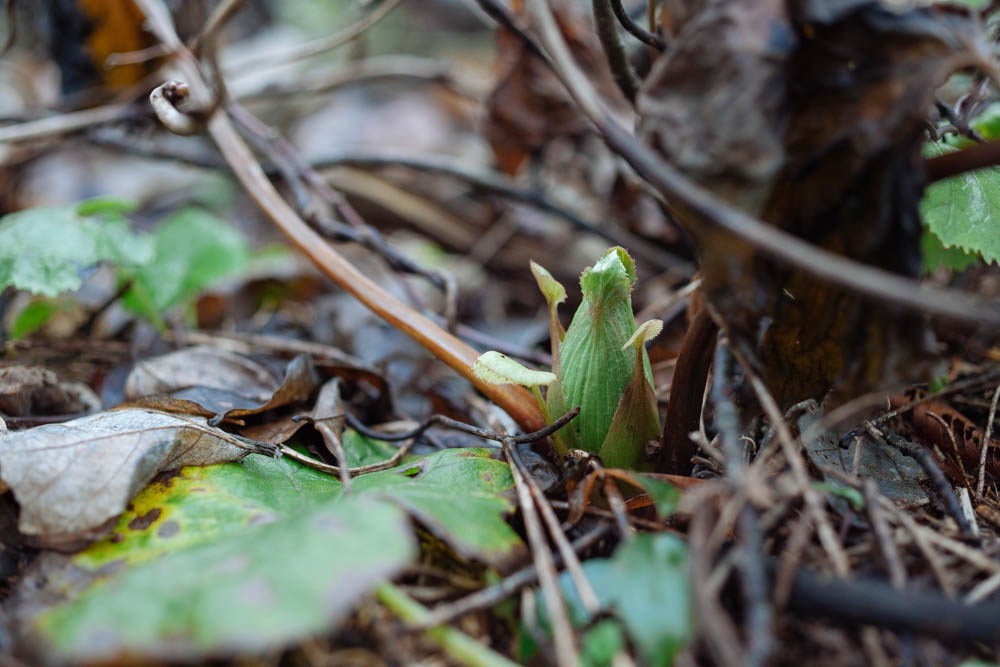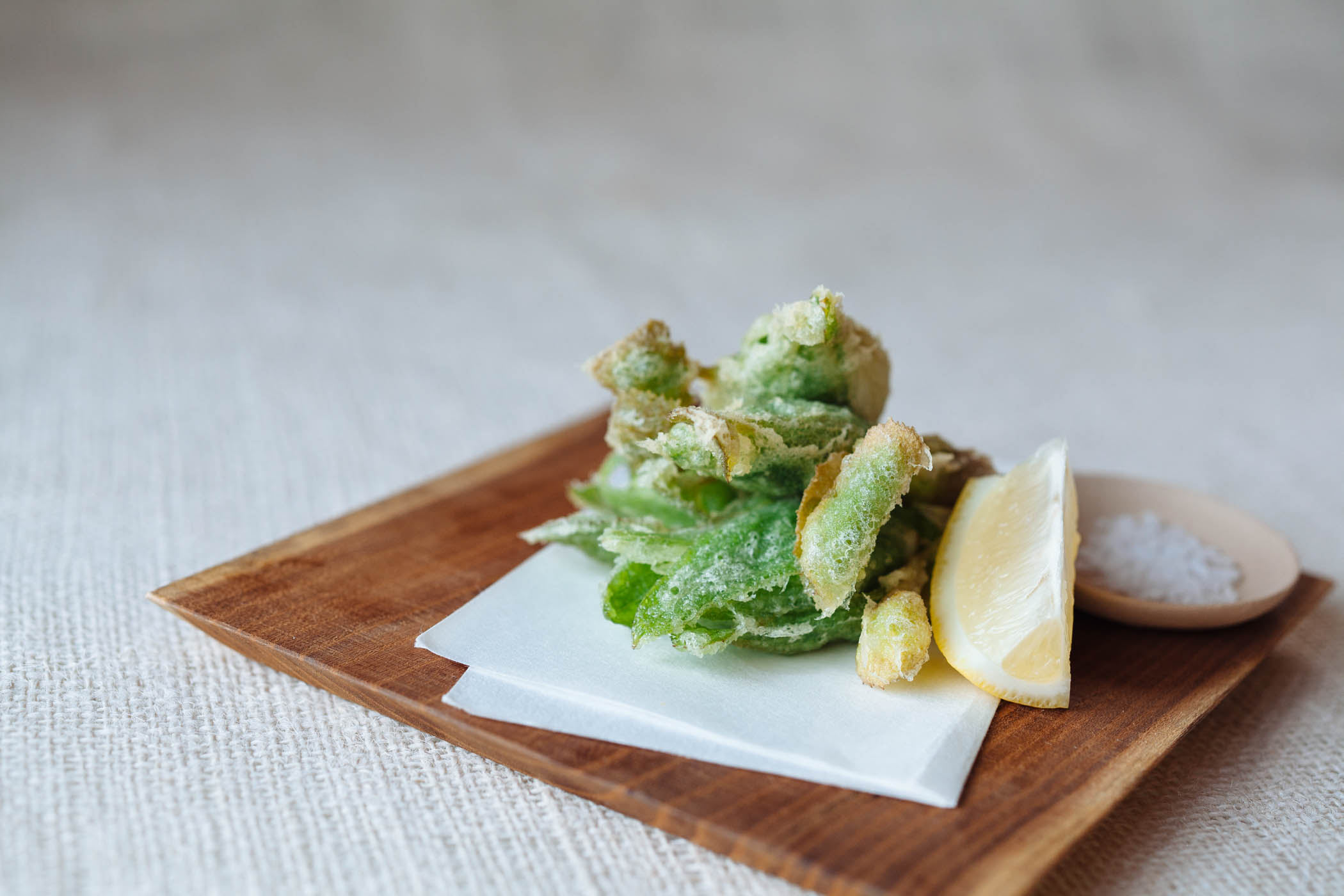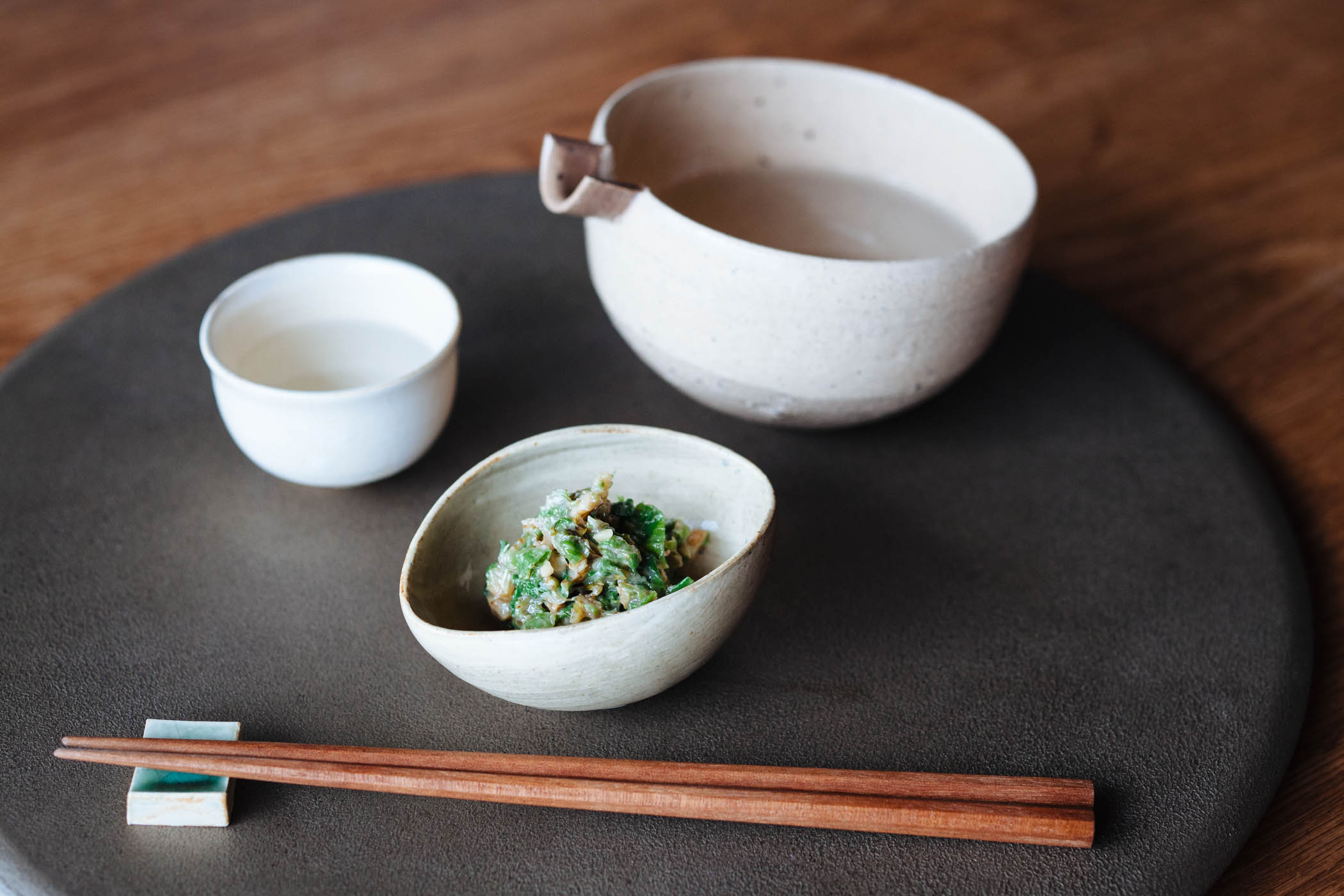The first day of spring and foraging

With the warmth of the wood stove at my back, I gaze out the window. Below me the broad roofs of Hanako’s studio to the right and my mother-in-law Kuniko’s house to the left stretch like the wings of the cheeky ravens that often perch upon their peaks. The layered ridge lines of mountains ripple in the distance. A brilliant sun shines crisp and bright. Its low rays pierce through a gap in the trees and ignite a burning desire for spring. I’m ready to molt, to wear looser fabrics, to feel the sun and air on my skin. Those days are still distant but I sense spring is stirring at unseen depths. And today just might be the day I long for each year as winter wanes. The day that foraging begins in Japan.
We take off down the narrow lane that snakes from our hilltop to the valley of Mirukashi proper below. It winds through thickets of bamboo, past ume orchards, and around mikan groves. We park beside an imposing storehouse clad in faded blue corrugated panels that match the color of the sky. We leap from the car anxious to find this jewel we seek and slide down the path, wary of hidden hollows that could quickly twist an ankle. Between the steep embankment above and a stagnant stream below, bracken ferns that grow tall and broad in summer have collapsed into a cascading tangled canopy. Drawing back a clump of desiccated fronds, I find an emerald trumpet of delicate leaves cradling a cluster of quilted button like buds. This is fukinoto, the first tangible indicator that spring is indeed is on the rise.
Fukinoto are the early flower of the common butterbur weed. They are the first of a string of sansai, wild vegetables that we forage throughout spring in the hills of Japan. They are the green of new beginnings, the only sign of life in a still barren, brown landscape. Though we officially entered the new year just over a month ago, for me, the start of a new revolution around the sun begins here with this first sign of renewal and awakening. I raise the dirty, wet stem to my nose and drink in the earthy, pungent aroma of spring breaking from winter.
Fukinoto are compelling. Their bright green flesh flashes from under cover like sparking gems. There is a primal euphoria when foraging. To gather something edible in the wild must tap into an ancient notion of survival. It is the promise of other day, of continued life. We find only a couple of handfuls. Many are still so small and we take cautious steps so as not to trample them. We’ll let them grow. It’s just as well for even as the sun shines brightly, our layers of wool and down barely assuage the pleading grasp of late winter and my fingertips already ache from prying buds out of the cold, damp soil. But it matters just a little less right now, for we have found the first fukinoto and thus we have found the covenant of spring, a season that promises to usher in warmth and ease and abundance.

To cook and to eat in Japan asks one to be highly attuned to the natural world. Japanese cuisine is codified seasonally in a canon that divides the four major seasons into dozens of micro seasons. Every five or six days new ingredients, grains, fish, and vegetables, come into season and we celebrate their return. This agrarian almanac, tied to Japan’s ancient lunisolar calendar, dictates menus all the way from the finest high-end restaurants to our own table here in Mirukashi. It is written in this almanac, and thus in the Japanese identity, that fukinoto is the first flavor of spring. But we hardly need such a manual living in the hills of rural Japan. Here appetites are whet by the length of the day, the height of the sun in the sky, the temperature of the air and a myriad of other imperceptible shifts from day to day throughout the seasons. The palate must become attuned to the subtle shifts in environment.
Today is February fourth, and in reviewing old photographs I’ve discovered that year after year, without thought of the date on the calendar, I’ve felt this familiar stirring, this sense of knowing and set off on the first annual hunt for fukinoto on this very same day. February fourth is an auspicious day on the agricultural calendar, a day that opens the season known as risshun. It is the season of fukinoto, a season that celebrates if not the arrival, at least the coming of spring.
In a farming town like Karatsu, agrarian rhythms still reign. We have small supermarkets with the predictable dispiriting array of long suffering produce trucked in from far reaches of the earth. But I prefer the village markets where it’s quickly revealed what’s in season. In these markets what the farmer, diver, fisherman, or forager deliver are the freshest and only ingredients available. Over the years I’ve learned our local seasonal canon. The shopkeeper, with his direct line to the farmers, keeps me apprised of their triumphs and trials and I leave his store with both a bag of produce and the story of my community. Preparing meals with what we can procure from the hills or the markets encourages us to take stock of the current state of local affairs, of where we stand in this fluid and ever fleeting moment called now.
In February the world outside my window feels bleak and I’ve grown tired of pale winter vegetables. The vibrant green of the fukinoto bud is a welcome shade at the table. In these early days of foraging they are tight and petit and rare so I deep fry them slightly battered in their entirety. We eat them piping hot with a drizzle of lemon and a sprinkle of sea salt. Fukinoto plow through unyielding soil and the taste of that trial is lodged in their cells. Tempura locks in fukinoto’s subtle umami and within a crisp bite. Under of deep-fried batter they are velvety smooth with a bitterness that defines spring. On other nights I’ll mix the chopped blanched buds with sweet white miso and walnuts for a sublime umami-rich, bitter-sweet appetizer. Nothing pairs more beautifully with a dry sake. A fire still blazes in the wood stove, and flurries still occasionally fall. But with a dab of this fukimiso on the tongue and a sip of sake to follow, time slows just a little as we savor the promise of spring.
